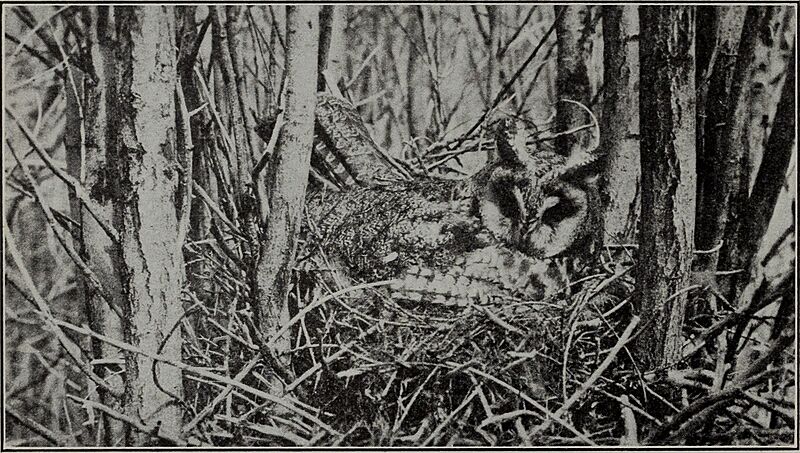Image: The common hawks and owls of California from the standpoint of the rancher (1922) (14563406738)

Description: A brooding long-eared owl. Note the long ear tufts which give the bird its name. Identifier: commonhawksowlso236dixo (find matches) Title: The common hawks and owls of California from the standpoint of the rancher Year: 1922 (1920s) Authors: Dixon, Joseph S. (Joseph Scattergood), 1884-1952 Subjects: Bird pests Agricultural pests Beneficial birds Hawks Owls Publisher: Berkeley, Calif. : University of California, College of Agriculture, Agricultural Experiment Station Contributing Library: University of California, Davis Libraries Digitizing Sponsor: University of California, Davis Libraries View Book Page: Book Viewer About This Book: Catalog Entry View All Images: All Images From Book Click here to view book online to see this illustration in context in a browseable online version of this book. Text Appearing Before Image: nd magpies are also appropriated by these owls (see fig. 8).At Mono Lake in May, 1916, the writer found six pairs of long-earedowls all nesting in magpie nests. The owls nested earlier than themagpies and apparently had first choice of the old nests available, 12 UNIVERSITY OF CALIFORNIA EXPERIMENT STATION since in nearly every instance a new nest was built nearby by the mag-pies. From 3 to 7 white eggs are laid the last of April or first ofMay (see fig. 9). Both parents are valiant defenders of their nest.In the case of one pair, the female stood boldly on the rim of the nest,fluffed out her feathers, depressed her ear tufts, and glared at theintruder. The male bird flitted about the nest, hooting excitedly andmewing like a cat. As soon as the observer set up his camera andput his head under the focusing cloth, he was taken by surprise bythe male owl, which swooped noiselessly down and started to dancea jig, with his sharp claws working furiously, on the top of thephotographers head. Text Appearing After Image: Fig. 8.—A brooding long-eared oavI. Note the long ear tufts which give thebird its name. This owl is an excellent mouser and merits the legal protectionthat has been given it. The owlets when hatched were covered with fluffy white thistle-down-like feathers. Ten days later, bluish pin feathers began toappear and the owlets developed tremendous appetites, so that theparents started hunting as soon as the sun was down in order tokeep their hungry youngsters fed. As the owlets grew older theybegan to edge away from the nest, and long before they were ableto fly they hopped about freely from limb to limb in the dense willowthickets (see fig. 10). Mice were abundant on the sandy sage-coveredflats and in the grassy meadows near the owls home. Remains ofwhite-footed, meadow, and pocket mice were found about the nest, butno bird remains were ever discovered there. The long-eared owl livesalmost exclusively on the smaller mice and is therefore one of themost beneficial birds in the state. Ci Note About Images Please note that these images are extracted from scanned page images that may have been digitally enhanced for readability - coloration and appearance of these illustrations may not perfectly resemble the original work.
Title: The common hawks and owls of California from the standpoint of the rancher (1922) (14563406738)
Credit: https://www.flickr.com/photos/internetarchivebookimages/14563406738/ Source book page: https://archive.org/stream/commonhawksowlso236dixo/commonhawksowlso236dixo#page/n11/mode/1up
Author: Internet Archive Book Images
Permission: At the time of upload, the image license was automatically confirmed using the Flickr API. For more information see Flickr API detail.
Usage Terms: No known copyright restrictions
License: No restrictions
License Link: https://www.flickr.com/commons/usage/
Attribution Required?: No
Image usage
The following page links to this image:

